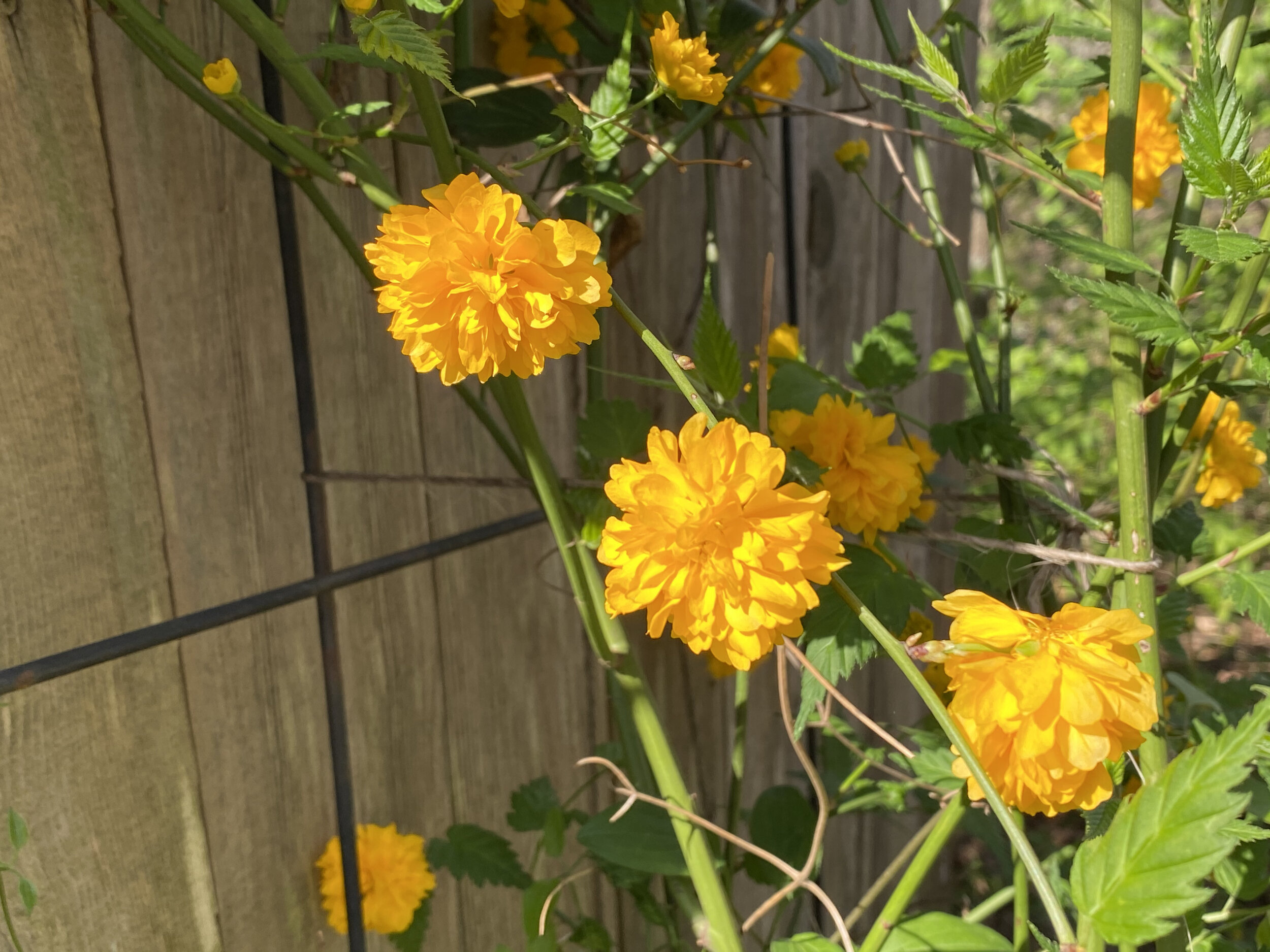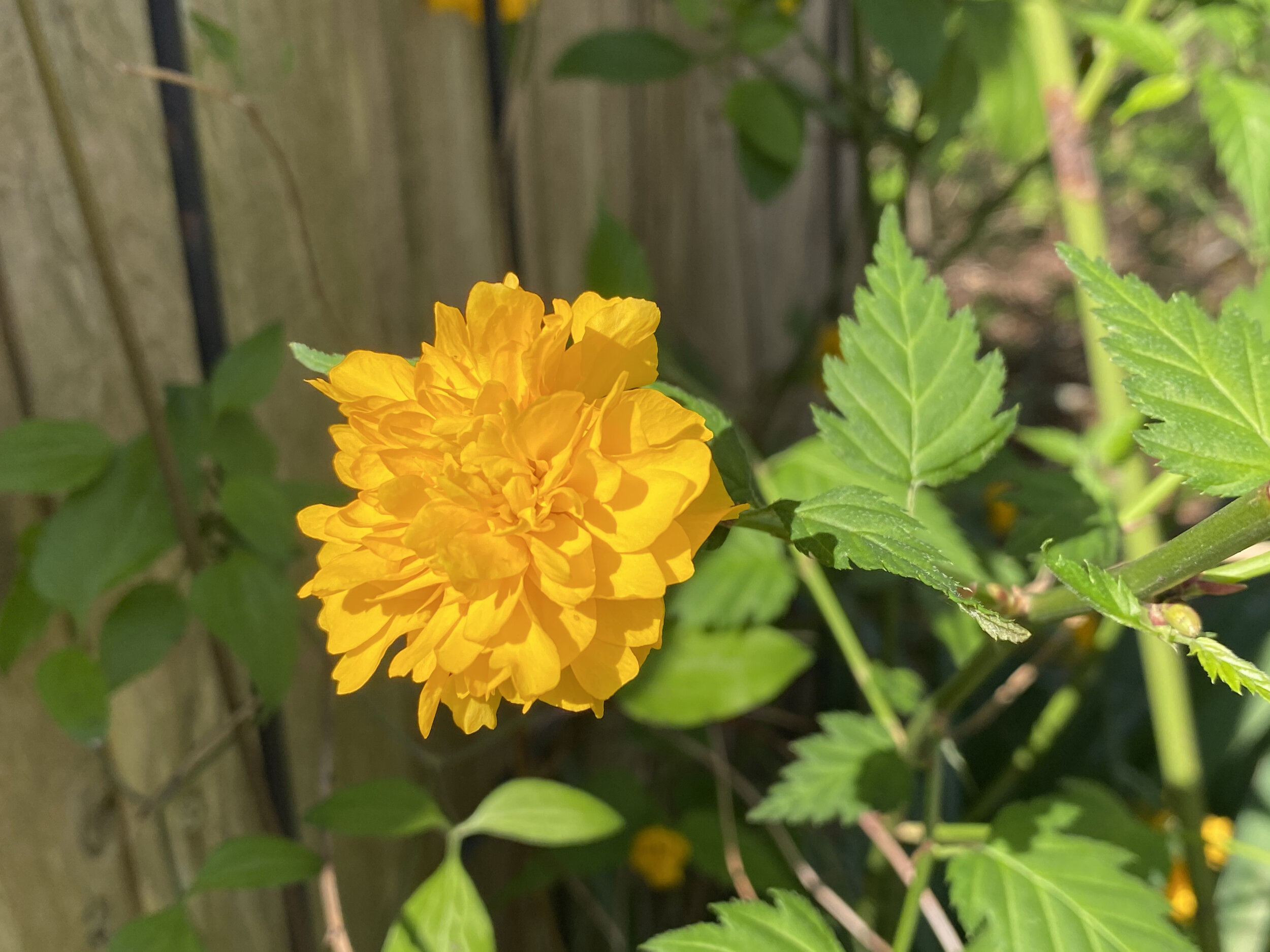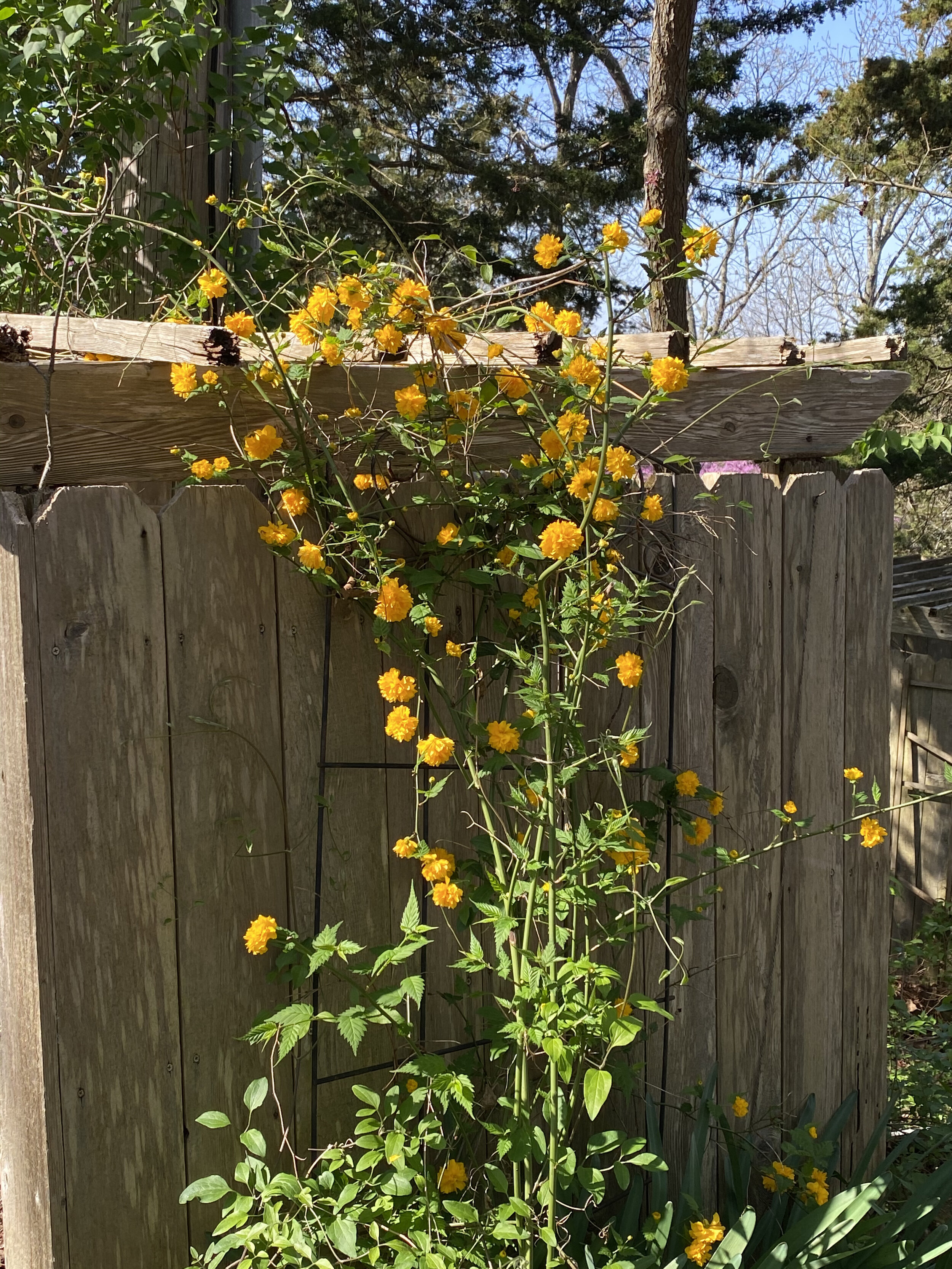Japanese Rose
/Japanese Kerria, also called Japanese rose, has lovely double yellow flowers. (Photo by Charlotte Ekker Wiggins)
Japanese Rose
Of all of the plants I share online and through my blogs, this is the one I get the most questions about. Kerria japonica, commonly known as Japanese rose or Japanese kerria, is a deciduous shrub in the rose family Rosaceae. It is native to China, Japan and Korea and grows well in my USDA Hardiness zone 5 limestone hillside garden.
Just as bright and cheery as Yellow Standing Cats Quilts, Japanese kerria brighten the spring landscape with their yolk yellow flowers.
The double yellow flower are delicate but last long as a cut flower. (Photo by Charlotte Ekker Wiggins)
This lovely, shrub with double flowers that resemble roses, is named after William Kerr, who introduced the cultivar 'Pleniflora'. It is the sole species in the genus Kerria.
Japanese rose can be trained to grow over a lattice. (Photo by Charlotte Ekker Wiggins)
Now this was given to me a couple of decades ago by a local landscaper as a vine. I do grow it over a couple of arbors and my garbage can surround but it’s a better free-standing shrub. In addition to blooming a couple of times a year, the shrub has branches that maintain their green color through winter.
The other advantage of this lovely shrub is that it’s happy to bloom in shade.
The most challenging part about this shrub is keeping the plant from expanding. Since my garden is informal, the bushiness of the plants fit right in.
Japanese rose is a shrub that can be kept small by removing the outside growth. (Photo by Charlotte Ekker Wiggins)
Japanese rose bloom about the same time as forsythia, another favorite yellow spring bloomer, and sometimes confused for each other.















